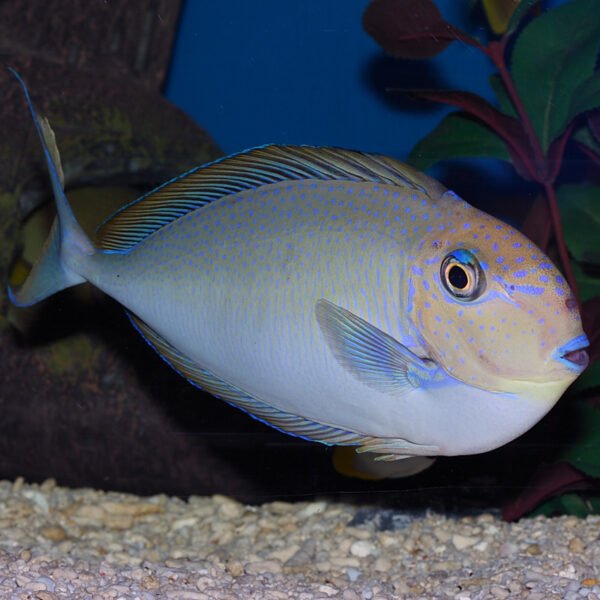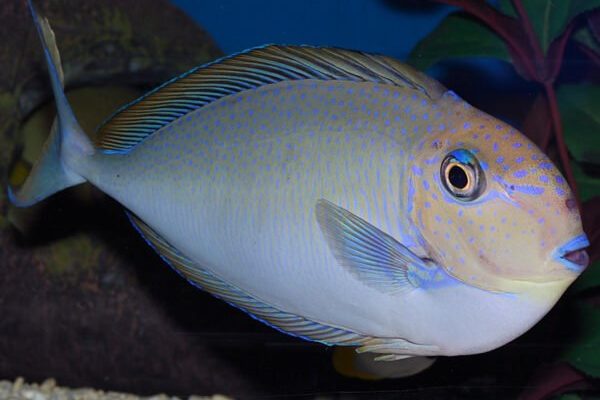
Understanding the evolutionary background of the Vlamingii Tang not only gives us insight into the species itself but also highlights the broader themes of adaptation in marine life. Imagine it as a thrilling adventure in the ocean, where each twist and turn influenced the Vlamingii Tang’s development. So, grab your imaginary snorkeling gear, and let’s dive deep into the waters of evolutionary biology!
What is the Vlamingii Tang?
The Vlamingii Tang, or *Zebrasoma veliferum*, is a striking reef fish native to the coral reefs of the Indo-Pacific region. This species is often recognized for its stunning coloration and unique body shape—elongated and flattened. Its brilliant blue body paired with bold yellow stripes creates a visual spectacle that is adored by aquarium enthusiasts around the world.
These fish are playful and curious, often swimming in groups. In their natural habitat, they play a crucial role in coral reef ecosystems by helping control algae growth. This relationship between the Vlamingii Tang and its environment is a prime example of how species can adapt and thrive. It’s like having your very own underwater gardener, ensuring the reef remains healthy and vibrant!
The Evolutionary Background
The evolutionary journey of the Vlamingii Tang can be traced back millions of years. It belongs to the family Acanthuridae, which includes other tangs and surgeonfish. The ancestors of these fish evolved in the warm waters of the Indo-Pacific, adapting to various challenges in their environment. Imagine ancient oceans filled with various predators and competitors; these fish had to become swift and agile to survive.
One of the key adaptations of the Vlamingii Tang is its flattened body shape. This design allows it to navigate through tight coral spaces, dodging potential threats. Their colors also serve an important purpose—brilliant hues help them blend in with their surroundings, while the bright patterns can be a warning to predators or a way to attract mates. It’s a beautiful example of how evolution crafts not just survival, but also intricate beauty.
The Role of Social Structure
Vlamingii Tangs are known for their social behavior. They often form schools, which not only helps them feel safer from predators but also aids in foraging for food. You might be wondering how this social structure evolved. It’s simple: fish that worked together had a better chance of finding food and avoiding dangers, such as larger predators.
Within these schools, Vlamingii Tangs exhibit a fascinating social hierarchy. Typically, there’s a dominant fish that leads the group. This setup not only fosters cooperation but ensures that resources are shared efficiently. Think of it as a mini-community in the ocean, where every member plays an important role. This social behavior is a result of evolutionary pressures—those who banded together had a better shot at survival.
Feeding Habits and Adaptations
When it comes to eating, Vlamingii Tangs are herbivores, primarily feeding on algae found on coral reefs. Their specialized teeth are well-suited for grazing, allowing them to scrape algae off rocks and coral surfaces. The evolution of this feeding strategy is a direct response to the availability of food sources in their habitat.
The adaptation of a herbivorous diet has played a significant role in the survival of this species. By consuming algae, they help keep coral reefs healthy, which in turn supports a variety of marine life. This symbiotic relationship highlights how the evolution of one species can positively impact entire ecosystems.
Conservation Status and Challenges
Like many marine species, the Vlamingii Tang faces challenges in today’s world. Overfishing, habitat destruction, and the impacts of climate change threaten their populations. Here’s the thing: while these fish are popular in aquariums, their removal from the wild can disrupt local ecosystems. This makes conservation efforts crucial for their survival.
Marine protected areas and sustainable fishing practices can help ensure the future of Vlamingii Tangs. By raising awareness and promoting responsible aquarium practices, we can help preserve this stunning species for generations to come. It’s about creating a balance between appreciation and responsibility—a key theme in the ongoing story of the Vlamingii Tang.
Keeping Vlamingii Tangs in Aquariums
If you are considering adding a Vlamingii Tang to your aquarium, it’s essential to understand their needs. These fish require ample space to swim and display their natural behaviors. A tank that holds at least 100 gallons is recommended to ensure they thrive. They also appreciate plenty of hiding spots and grazing areas for their dietary needs.
You might be wondering how to ensure your Vlamingii Tang feels at home. Regular water quality checks, appropriate tank mates, and a balanced diet of algae and seaweed are critical. When properly cared for, these fish not only thrive but also bring a splash of color and life to your underwater landscape.
The evolutionary journey of the Vlamingii Tang is a testament to the wonders of nature. From their vibrant colors and intricate social structures to their role in coral reef ecosystems, these fish showcase the beauty of adaptation. It’s essential to appreciate the unique challenges they face today and do our part to protect them.
In the grand tapestry of ocean life, each creature has a story to tell. Understanding the Vlamingii Tang’s evolution sparks curiosity about the delicate balance of our marine ecosystems. So, the next time you spot one of these magnificent fish, take a moment to appreciate the journey they’ve taken through time, and let that inspire your own adventures in the vast ocean of knowledge!

